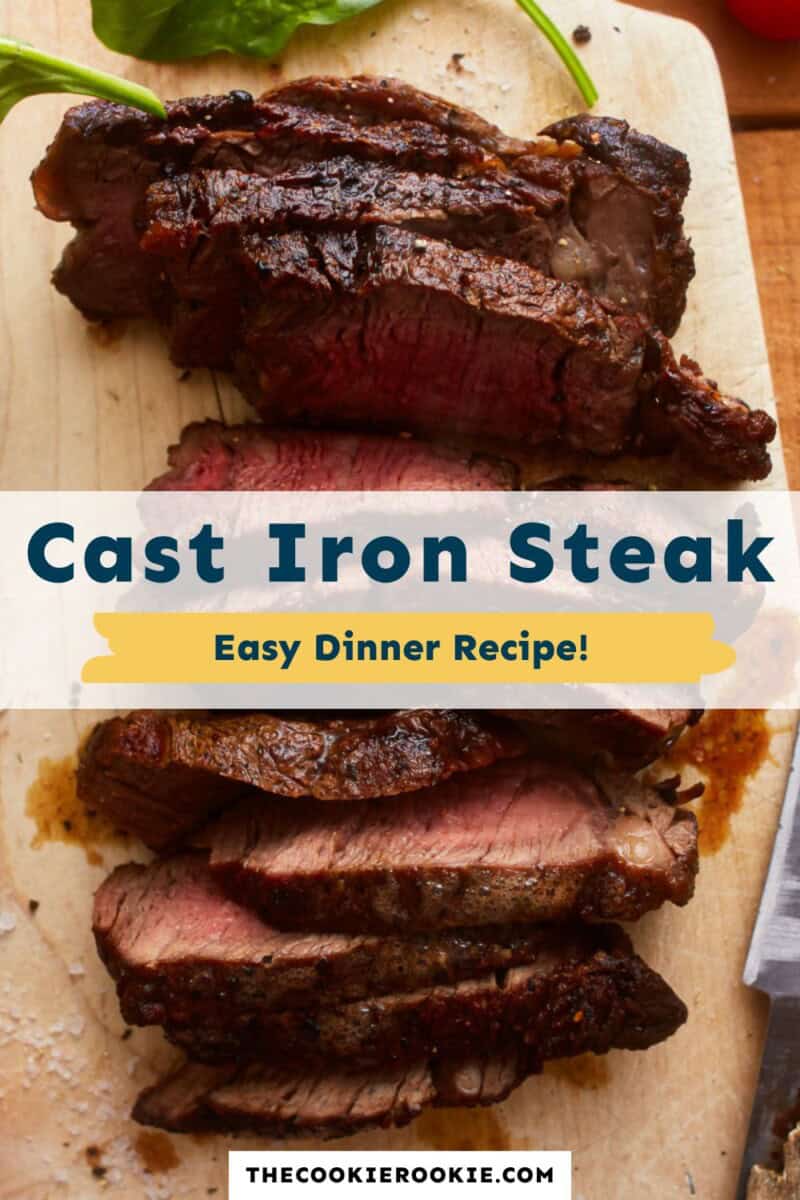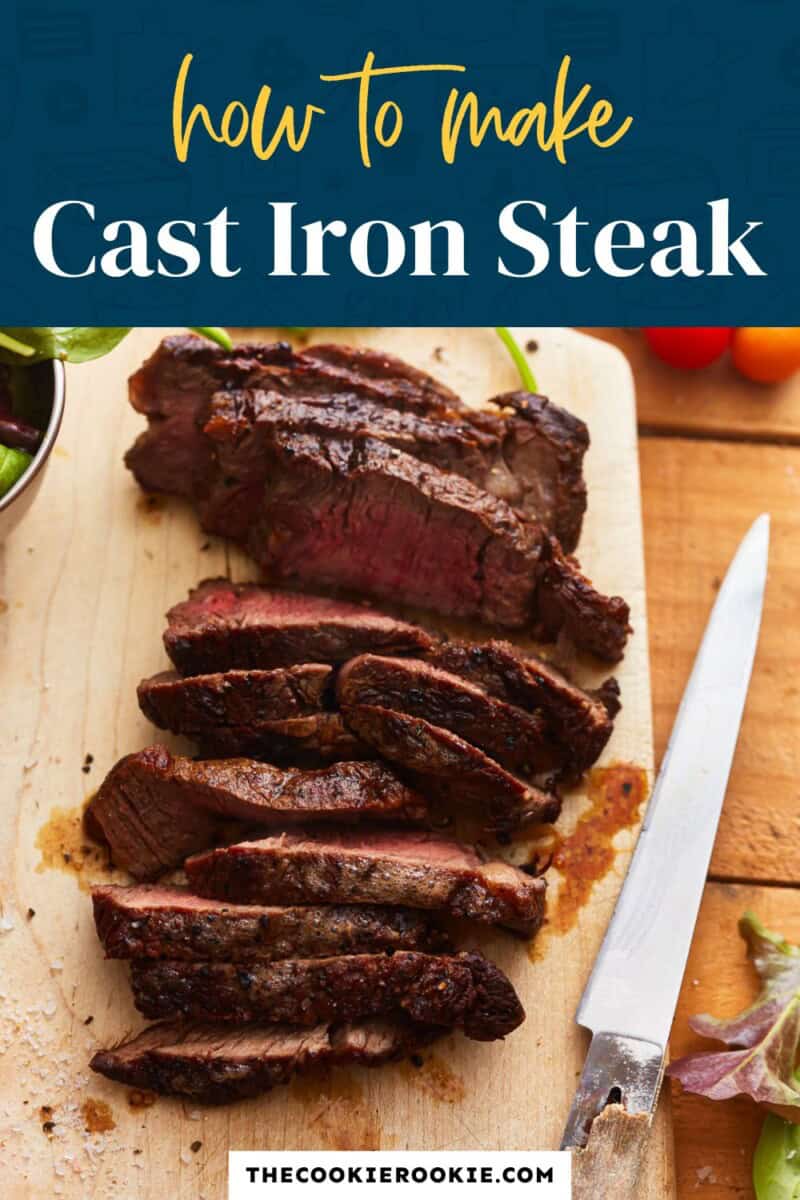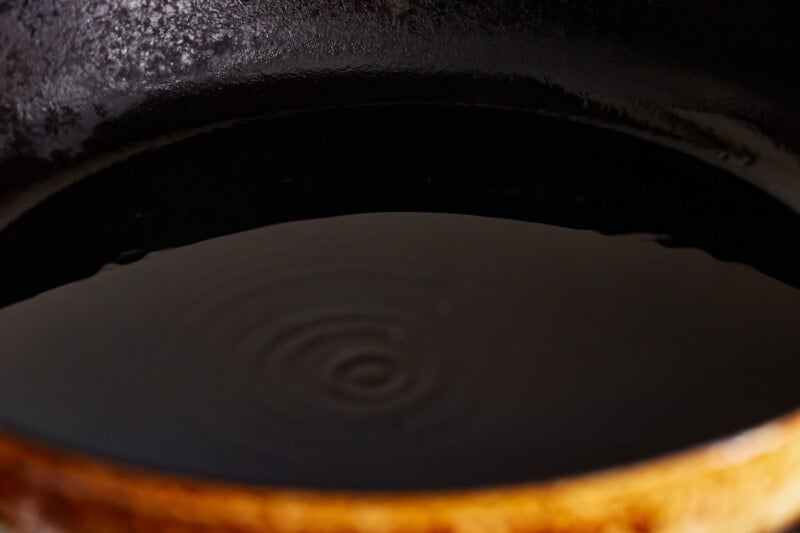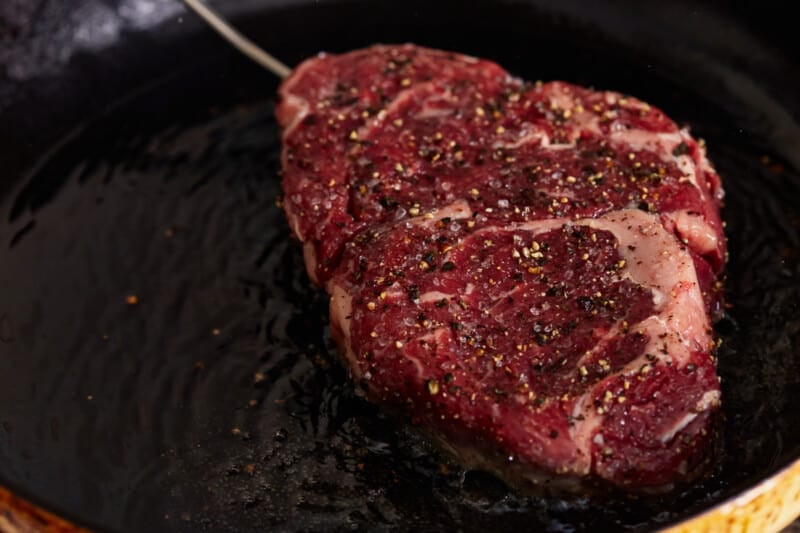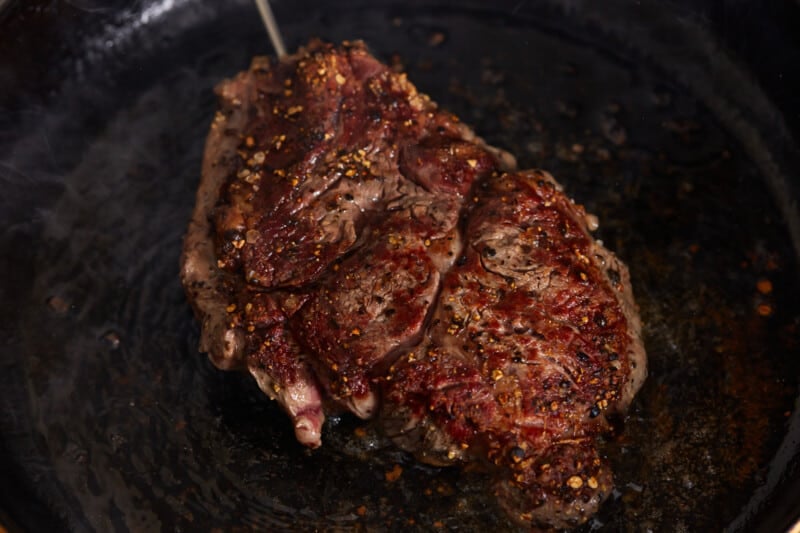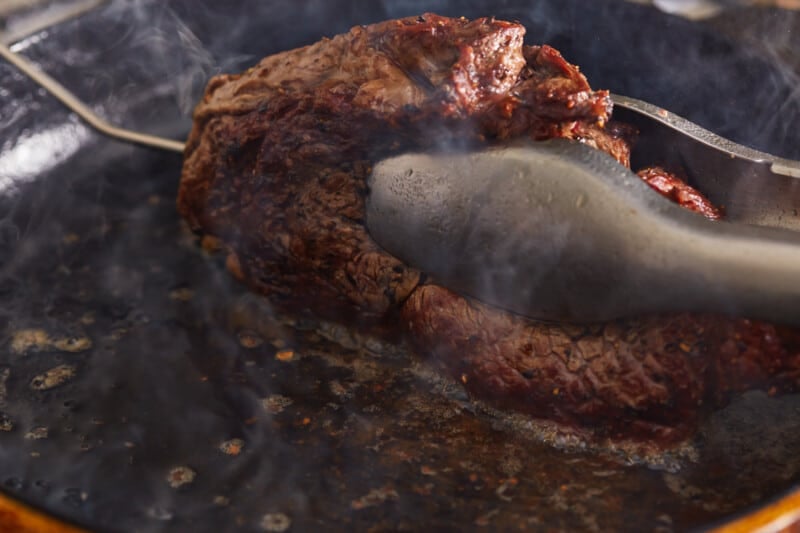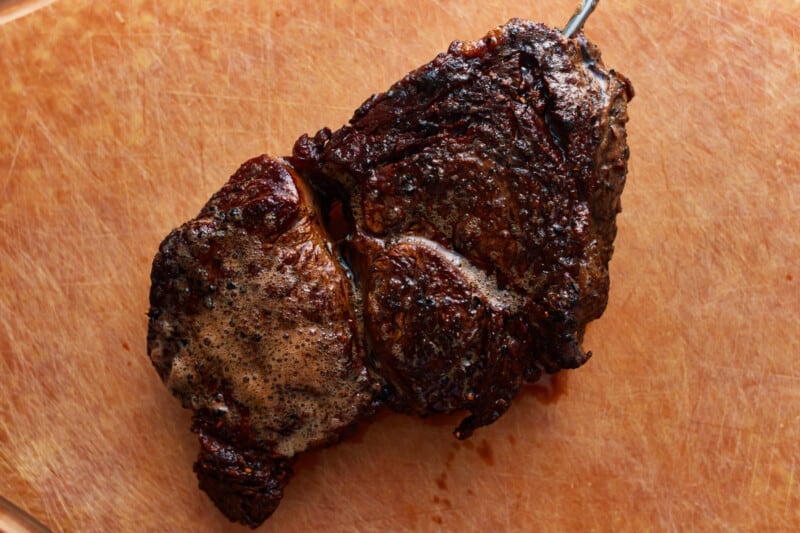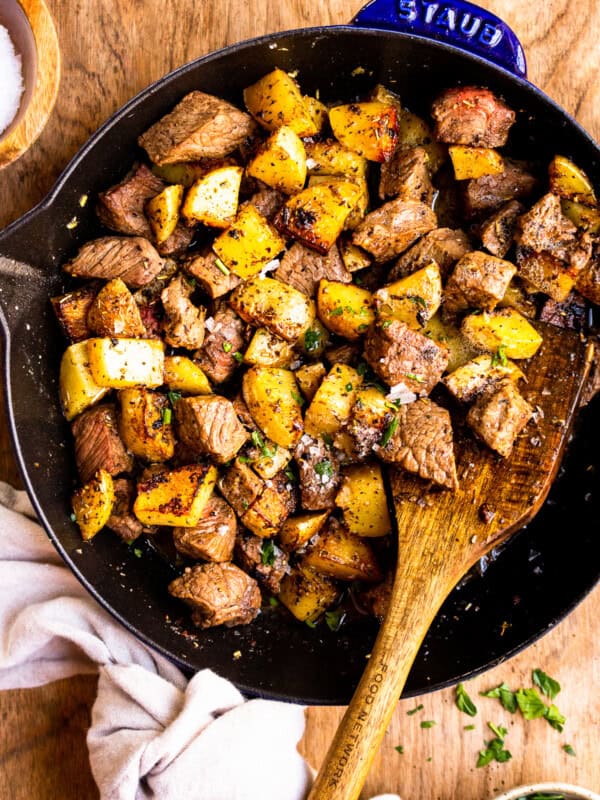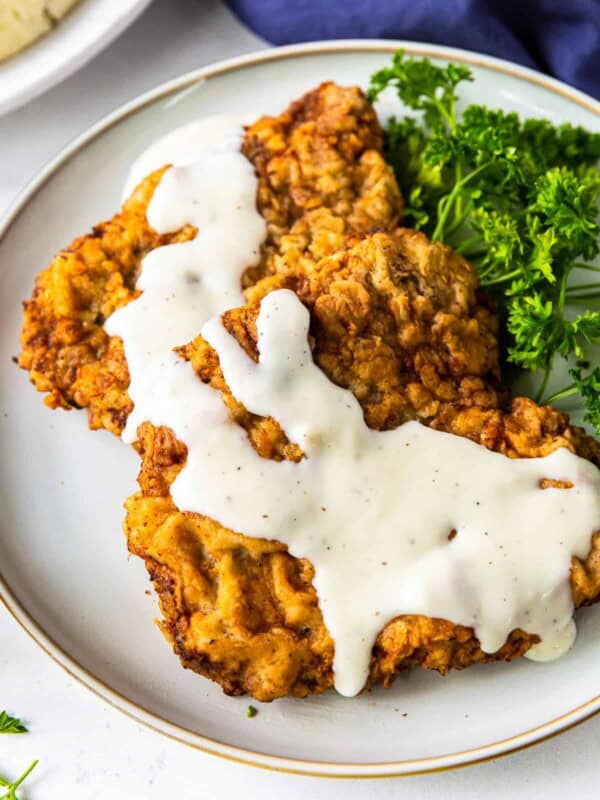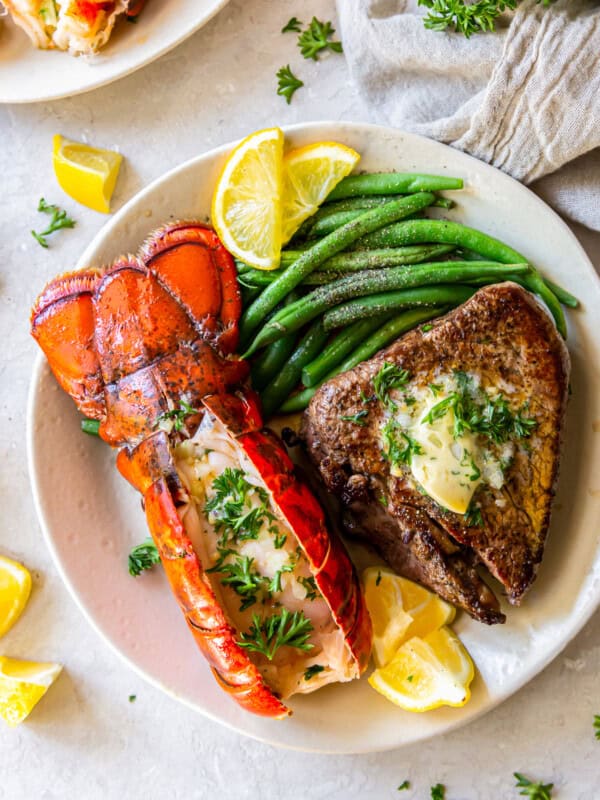Published
When I first started out, cooking steak in a cast iron pan seemed so intimidating. Well, I’m here to tell you that it’s sooo much easier than I ever imagined. I don’t know what I was so worried about! Cast iron steak is tender, juicy, and has the perfect crispy crust. It takes just 15 minutes, and it’s as good (if not better) than anything you could get at a steakhouse. I’ll teach you all the best tips and tricks for a perfectly cooked steak every time!
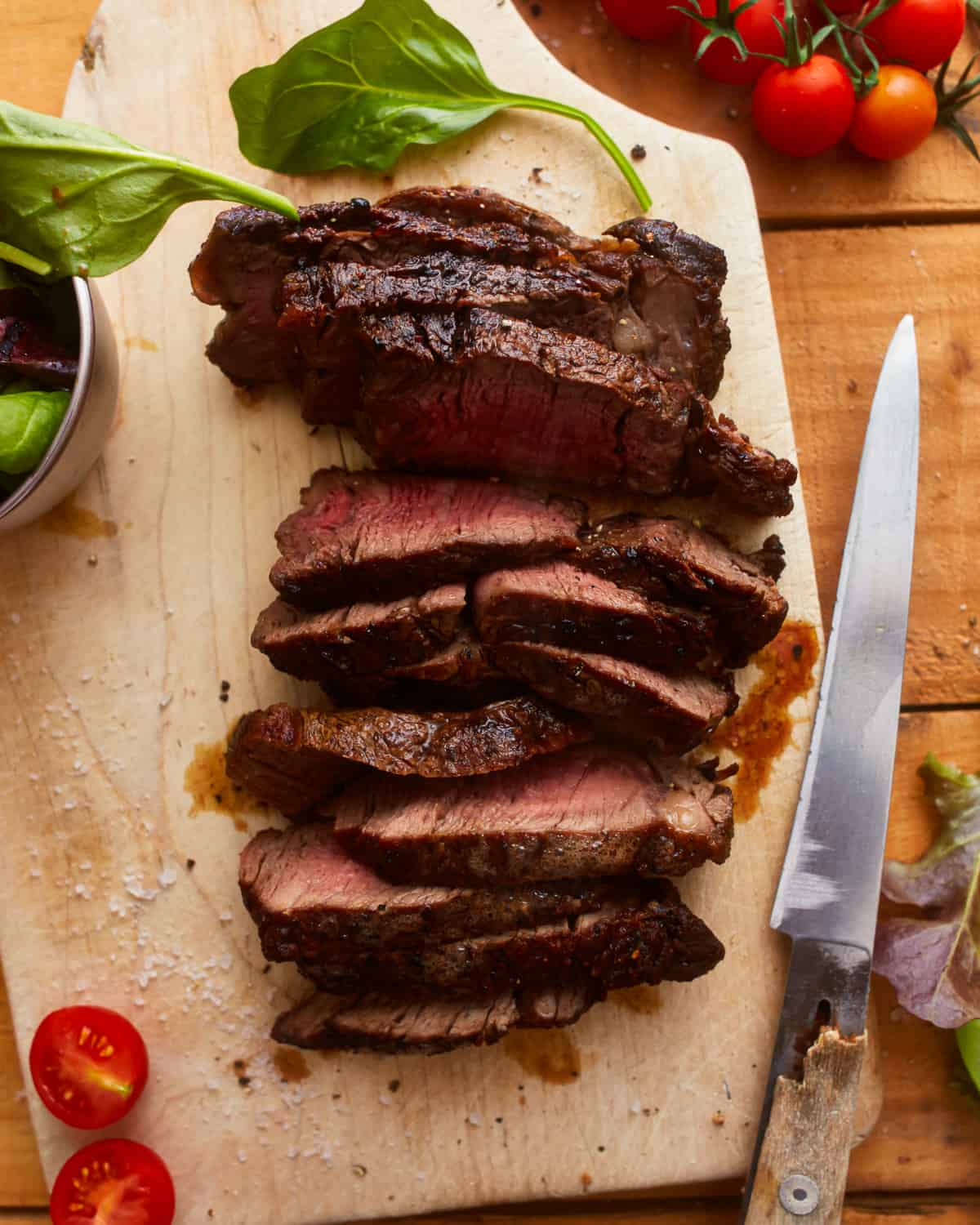
Pin this recipe for later!
Pin ItEasy Cast Iron Steak
Steak doesn’t have to be a food you only enjoy when you go out. I used to think that way, and now I just feel silly. Honestly, it’s even easier to make than chicken. I kept my thermometer on me the first few times I tested this recipe, but now I feel like I could make this cast iron steak in my sleep—it’s that easy!
Tips for Beginners
- The best steaks for searing in a cast iron pan are thick-cut (about 1½-2 inches thick). Thicker steaks develop a nice crust while remaining tender inside.
- Bring your steaks to room temperature for about 30 minutes before beginning. This will help them to cook more evenly.
- I love the simplicity of fresh thyme and garlic as the main flavors for this cast iron skillet steak, but you could use other fresh herbs if you prefer. Rosemary, sage, oregano, or tarragon are all great choices.
Cast Iron Steak Recipe
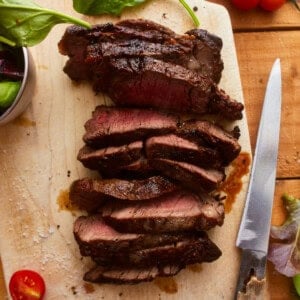
Equipment
- Cast Iron Skillet
- Instant Read Meat Thermometer
Ingredients
- 1 thick-cut boneless ribeye steak* about 1 pound
- Kosher salt and freshly ground black pepper to taste
- 3 tablespoons vegetable oil
- 3 tablespoons unsalted butter (⅜ stick)
- 4 cloves garlic smashed
- 3 sprigs fresh thyme**
Instructions
- Pat the ribeye steak dry with paper towels. This helps ensure a good sear. Then generously season the steak on all sides with salt and freshly ground black pepper. Don't be shy with the seasoning; it enhances the flavor.1 thick-cut boneless ribeye steak*, Kosher salt and freshly ground black pepper
- Place your cast iron pan on the stovetop and add the oil. Heat it over high heat until it starts to smoke slightly. This ensures a hot surface for a perfect sear.3 tablespoons vegetable oil
- Carefully add the seasoned ribeye steak to the hot pan and make sure it makes good contact with the hot pan. Cook for 2 minutes on one side without moving it.
- Flip the steak and cook for another 2 minutes on the other side.
- After searing both sides, sear each edge of the steak for about 1 minute to develop a beautiful crust all around.
- Reduce the heat to medium-low and add the unsalted butter, smashed garlic cloves, and thyme sprigs to the pan. As the butter melts, tilt the pan slightly and use a spoon to baste the steak continuously with the melted butter. Cook for about 3-4 minutes. Flip the steak every 20 seconds during this process. Basting and flipping help ensure even cooking and flavor infusion.3 tablespoons unsalted butter, 4 cloves garlic, 3 sprigs fresh thyme**
- Use an instant-read thermometer to monitor the internal temperature of the steak. Remove it from the pan when it reaches about 15°F below your desired doneness because the steak will continue to cook as it rests.
- Transfer the cooked ribeye steak to a cutting board and let it rest for about 5 minutes. This resting period allows the juices to redistribute within the meat.
- After resting, slice the ribeye steak against the grain into your preferred thickness. Serve immediately and enjoy!
Becky’s Tips
Nutrition information is automatically calculated, so should only be used as an approximation.
How to Cook a Steak in a Cast Iron Skillet Step by Step

Season the Steak: Pat a 1-pound thick-cut boneless ribeye steak dry with paper towels. This helps ensure a good sear. Then generously season the steak on all sides with salt and freshly ground black pepper. Don’t be shy with the seasoning; it enhances the flavor.

Heat the Oil: Place your cast iron pan on the stovetop and add 3 tablespoons of vegetable oil. Heat it over high heat until it starts to smoke slightly. This ensures a hot surface for a perfect sear.
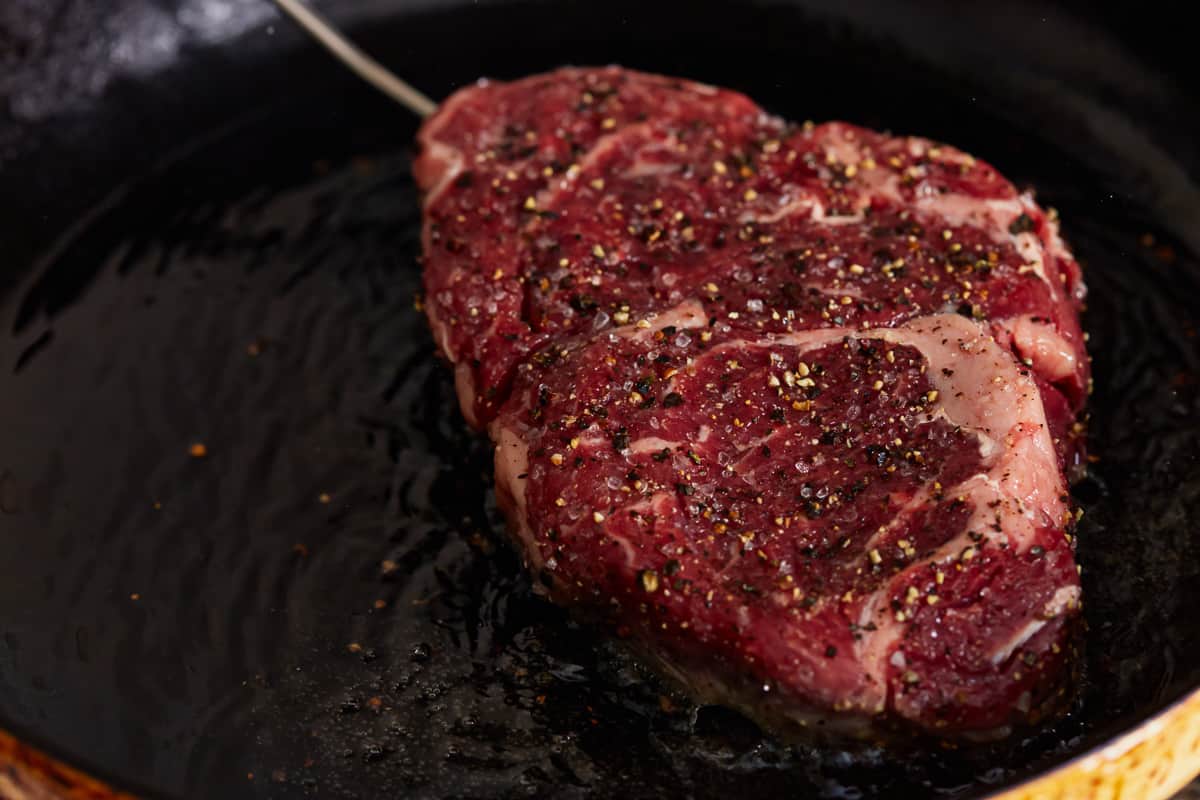
Sear the Steak: Carefully add the seasoned ribeye steak to the hot pan and make sure it makes good contact with the hot pan. Cook for 2 minutes on one side without moving it.
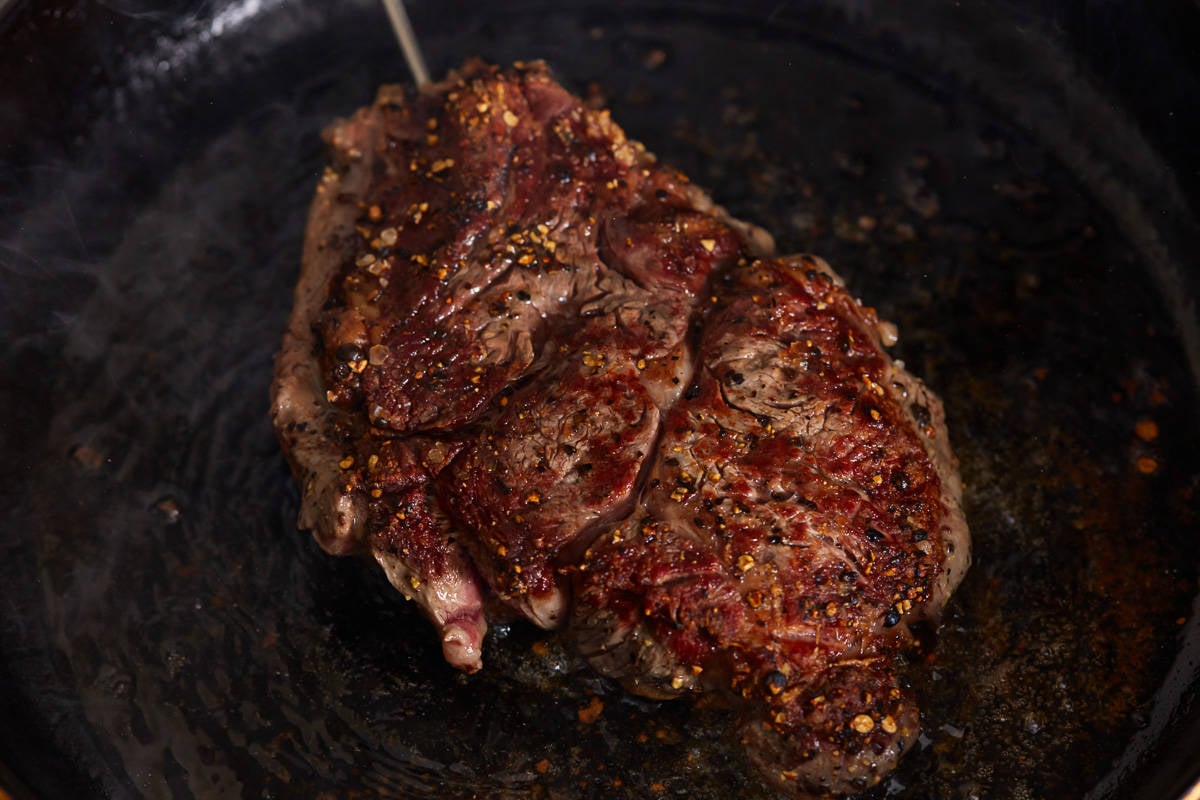
Flip the Steak: Flip the steak and cook for another 2 minutes on the other side.
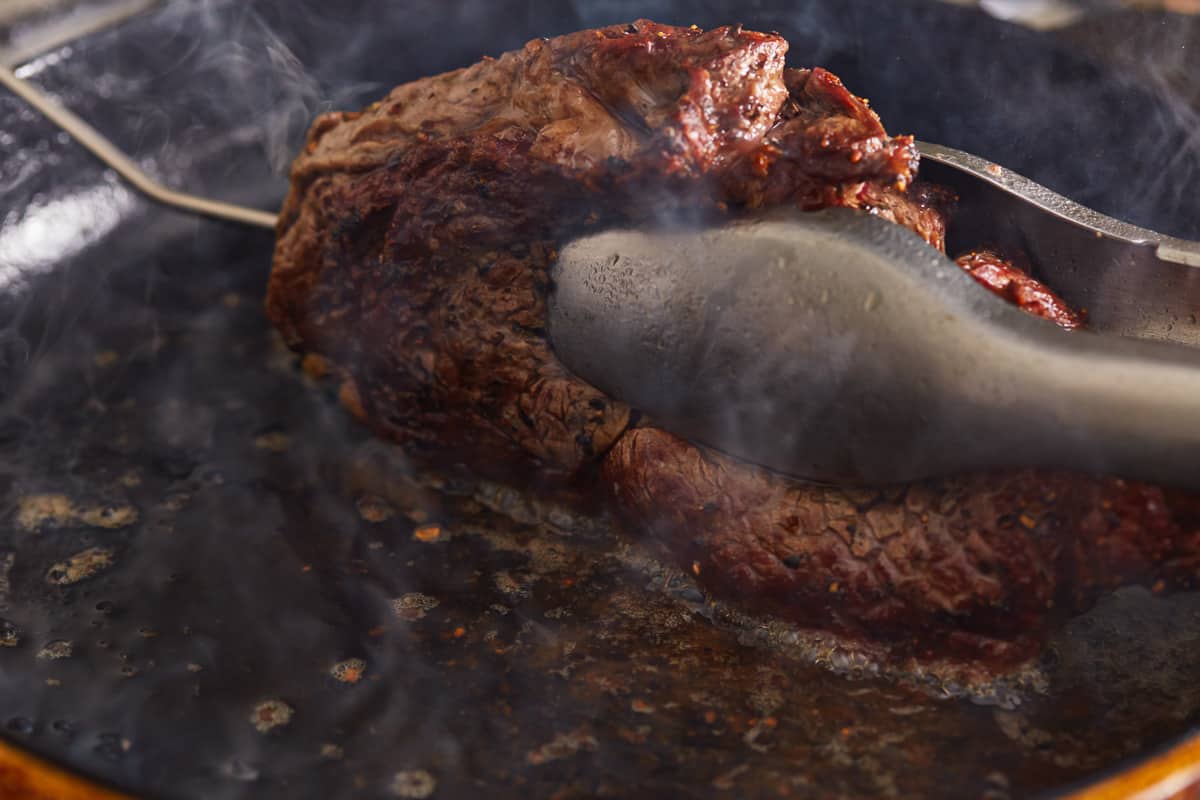
Sear the Edges: After searing both sides, sear each edge of the steak for about 1 minute to develop a beautiful crust all around.
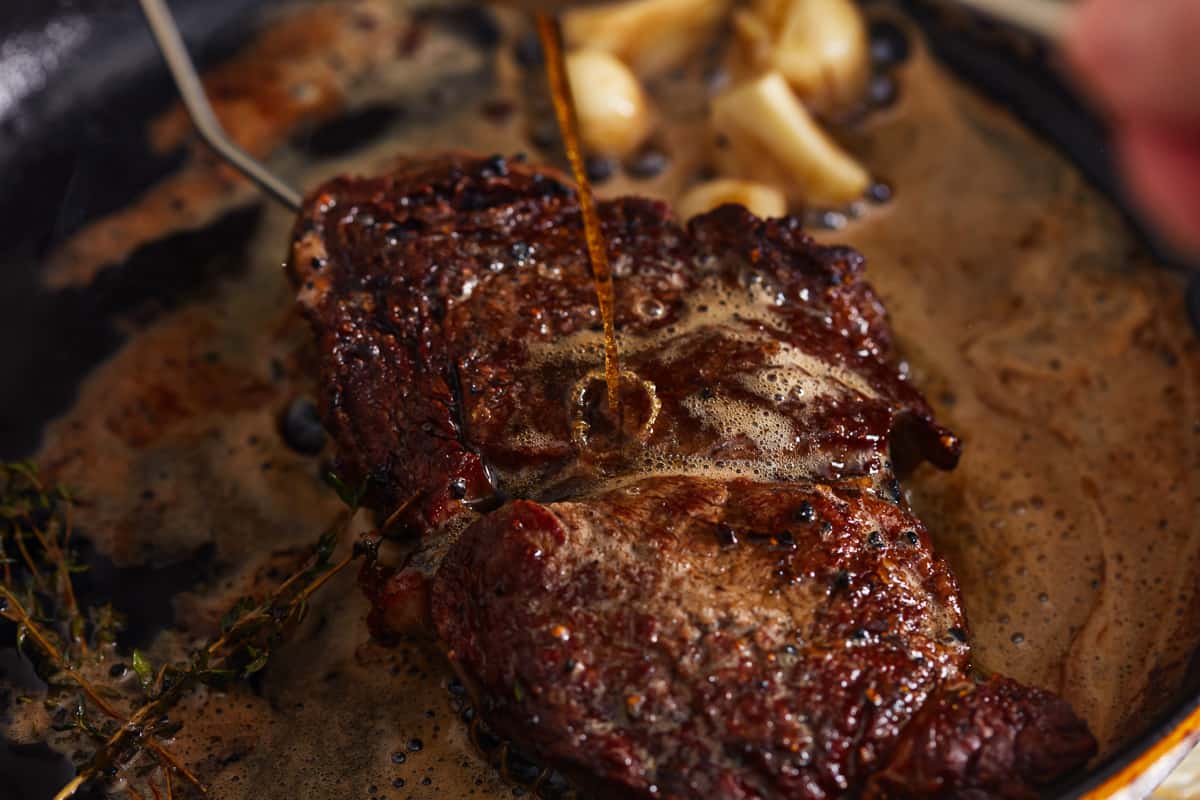
Baste the Steak: Reduce the heat to medium-low and add 3 tablespoons of unsalted butter, 4 smashed garlic cloves, and 3 thyme sprigs to the pan. As the butter melts, tilt the pan slightly and use a spoon to baste the steak continuously with the melted butter. Cook for about 3-4 minutes. Flip the steak every 20 seconds during this process. Basting and flipping help ensure even cooking and flavor infusion.
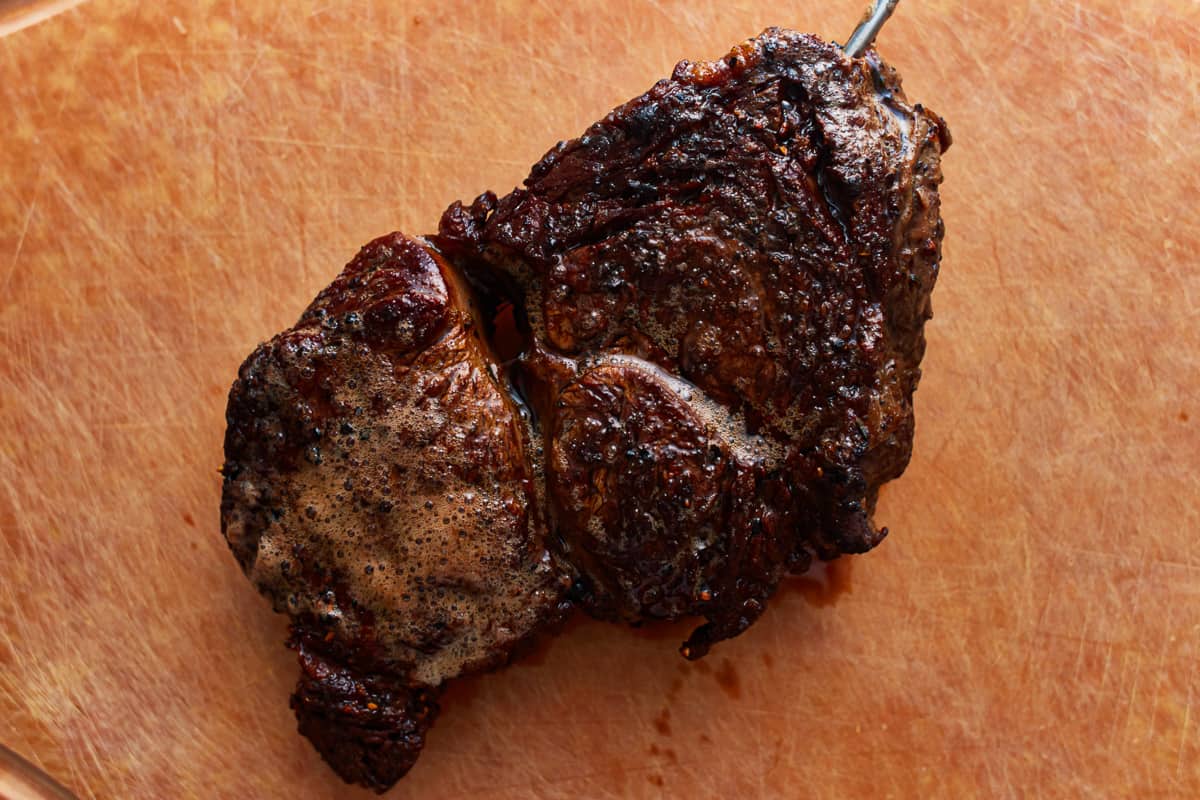
Rest the Steak: Use an instant-read thermometer to monitor the internal temperature of the steak. Remove it from the pan when it reaches about 15°F below your desired doneness because the steak will continue to cook as it rests. Transfer the cooked ribeye steak to a cutting board and let it rest for about 5 minutes. This resting period allows the juices to redistribute within the meat. After resting, slice the ribeye steak against the grain into your preferred thickness. Serve immediately and enjoy!
How to Store and Reheat
Store leftover cast iron steak in an airtight container in the refrigerator for up to 4 days. I think it’s best enjoyed cold the next day, but you can reheat it in a skillet until the internal temperature of your steak reaches 120°F, or in the microwave on 50% power until warmed through.
Freeze cast iron steak in an airtight container for up to 3 months. Let thaw overnight in the refrigerator before enjoying.

Serving Suggestions
Classic sides like fries or sautéed vegetables make great companions to a perfectly cooked ribeye steak. Start the meal with a crisp chopped salad to feel like you’re truly at a steakhouse.
